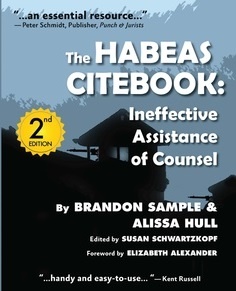Ninth Circuit Holds District Courts Have No Authority Under Rule 4 of Rules Governing § 2254 Cases to Dismiss Habeas Petition on the Merits
by Sam Rutherford
The U.S. Court of Appeals for the Ninth Circuit delineated the scope of U.S. District Courts’ authority to summarily dismiss a state prisoner’s habeas corpus petition under Rule 4 of the Rules Governing Section 2254 Cases in the U.S. District Courts (“Rule 4”), holding that the U.S. District Court for the District of Montana erred in dismissing the defendant’s petition on the merits because courts have no authority under Rule 4 to dismiss a petition on that basis. They may do so only ifthe petition is “facially defective” or “clearly not cognizable.”
Patrick Neiss was convicted in Montana state court of deliberate homicide and evidence tampering based on circumstantial evidence. He filed a pro se federal habeas petition under 28 U.S.C. § 2254, claiming ineffective assistance of trial and appellate counsel. Neiss argued that his trial counsel failed to challenge the particularity of a search warrant, which led to the discovery of silencer-related internet searches on his computer, and that his appellate counsel failed to raise this issue on appeal.
The District Court dismissed Neiss’ petition under Rule 4 without calling for an answer from the State. The court ruled that Neiss could not succeed on the merits of his ineffective assistance claims but did not find that the petition was either procedurally barred or patently frivolous. Neiss timely appealed, and the Ninth Circuit granted him a certificate of appealability only on the issue of whether his petition was properly dismissed under Rule 4.
Rule 4 authorizes a District Court to dismiss a habeas petition prior to the State submitting an answer “[i]f it plainly appears from the petition and any attached exhibits that the petitioner is not entitled to relief in the district court.” The Advisory Committee Note to Rule 4 states that the summary dismissal of a habeas petition “may be called for on procedural grounds, which may avoid burdening the respondent with the necessity of filing an answer on the substantive merits of the petition.”
The Ninth Circuit has held summary dismissal under this rule, as defined by the Advisory Committee Note, is appropriate only if the petition is “facially defective.” Quoting Boyd v. Thompson, 147 F.3d 1124 (9th Cir. 1998). A state prisoner’s habeas petition may be dismissed under this standard only when the face of the petition reveals that the petitioner’s federal claims are procedurally defaulted, have not been exhausted in stated court, or are untimely. See Valdez v. Montgomery, 918 F.3d 687 (9th Cir. 2019) (facially untimely); Boyd (procedurally defaulted); O’Bremski v. Maass, 915 F.2d 418 (9th Cir. 1990) (failure to exhaust state remedies).
A habeas petition may also be summarily dismissed under Rule 4 if it asserts “claims that are clearly not cognizable.” Clayton v. Biter, 868 F.3d 840 (9th Cir. 2017). But the U.S. Supreme Court and Ninth Circuit have long held that summary dismissal is appropriate under this standard only when the claims raised in the habeas petition are “vague,” “conclusory,” “palpably incredible,” or “patently frivolous or false.” Blackledge v. Allison, 431 U.S. 63 (1977); Hendricks v. Vasquez, 908 F.2d 490 (9th Cir. 1990). The rule permits summary dismissal when the prisoner fails to state a federal claim but not when the prisoner alleges facts that, if true, could support granting relief. Clayton; United States v. Withers, 638 F.3d 1055 (9th Cir. 2011); Gutierrez v. Griggs, 695 F.2d 1195 (9th Cir. 1983).
The Court noted that every other circuit has interpreted Rule 4 in the same manner. See Moran v. Vose, 816 F.2d 35 (1st Cir. 1987) (per curiam); Ron v. Wilkinson, 565 F.2d 1254 (2d Cir. 1977); Small v. Endicott, 998 F.2d 411 (7th Cir. 1993); O’Blasney v. Solem, 774 F.2d 925 (8th Cir. 1985).
In other words, federal claims that are not procedurally barred may be dismissed under Rule 4 only if they are “frivolous or incredible.” A claim meets this standard only when it is “[l]acking a legal basis or legal merit; manifestly insufficient as a matter of law.” Definition of “frivolous,” Black’s Law Dictionary (12th ed. 2024). As the Court explained, “the standard is not whether the claim will ultimately—or even likely—succeed or fail, but rather, whether the petition states a cognizable, non-frivolous claim.” Hendricks.
Turning to the present case, the Court concluded that the District Court misapplied Rule 4. To begin with, the Court did not find, and the State did not argue, that his claims were procedurally barred. Neiss raised his ineffective assistance claims in state court both on direct appeal and postconviction review, and the Montana Supreme Court rejected them in a divided opinion. He then filed a timely, properly formatted habeas petition in the District Court asserting these same claims. The petition was therefore not subject to summary dismissal as being “facially defective,” according to the Court.
Next, Neiss’ ineffective assistance claims also were not frivolous, the Court determined. When the Montana Supreme Court rejected them on postconviction review, one Justice dissented and believed that he was entitled to relief. This fact, according to the Court, demonstrates that his petition was not frivolous because “jurists can disagree about the merits of his claim.” Thus, the Court held that because Neiss’ petition was not procedurally barred and alleged “a cognizable, non-frivolous claim,” the District Court erred by summarily dismissing it on the merits under Rule 4.
Accordingly, the Court reversed the judgment of the District Court and remanded the case for further proceedings consistent with its opinion. See: Neiss v. Bludworth, 114 F.4th 1038 (9th Cir. 2024).
As a digital subscriber to Criminal Legal News, you can access full text and downloads for this and other premium content.
Already a subscriber? Login





